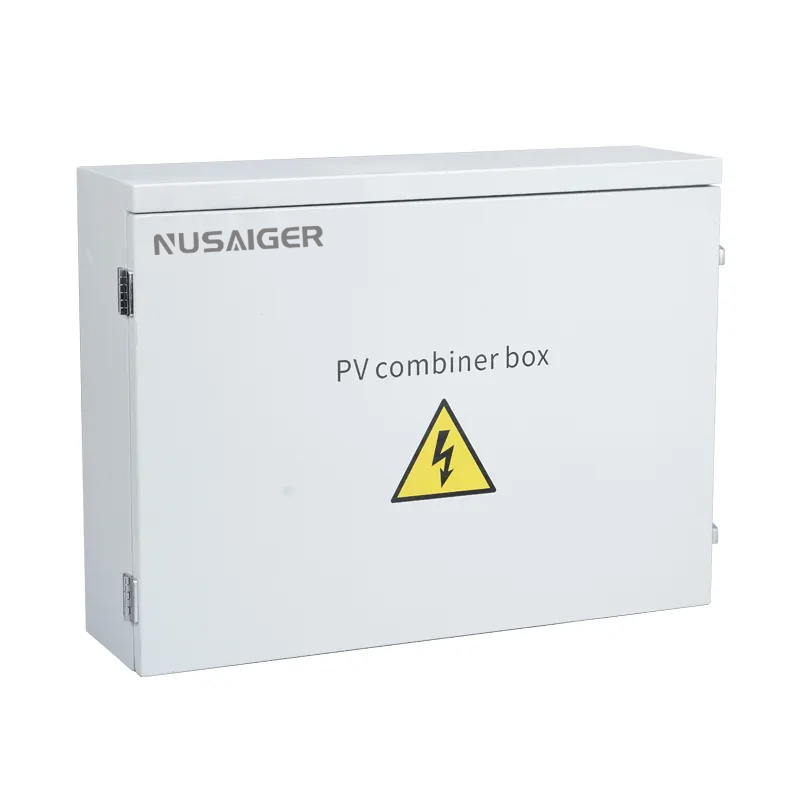Top Features to Look for When Buying a PV Combiner Box for Your Solar System
The PV combiner box plays a vital role in the performance and protection of solar photovoltaic (PV) systems. Whether you’re planning a rooftop solar installation or a ground-mounted solar farm, selecting the right combiner box is essential for ensuring electrical safety, efficient operation, and long-term durability. This comprehensive guide outlines the key features you should look for before purchasing a PV combiner box.
1. What Is a PV Combiner Box and Why Is It Important?
A PV combiner box is an electrical enclosure that combines multiple DC outputs from individual PV strings into a single output. It provides overcurrent protection for each string, surge protection for the system, and a convenient point of monitoring and maintenance.
Importance of a PV Combiner Box:
- Reduces cabling complexity
- Protects solar strings from overcurrent and surges
- Improves system troubleshooting and monitoring
- Ensures compliance with safety and code requirements
2. Number of String Inputs
The first consideration is the number of PV strings your system will have. Combiner boxes typically come in configurations from 2 to 24 string inputs. Select a box that matches your array size and allows for possible future expansion.
Tip: Always choose a box with a few extra inputs if you anticipate adding more panels later.
3. Voltage Rating Compatibility
PV systems typically operate at 600V, 1000V, or 1500V DC. Your combiner box must match the system’s maximum voltage to avoid insulation failure or overheating. Never undersize voltage tolerance, especially for commercial or utility-scale systems.
4. String-Level Overcurrent Protection
Every input string must be protected by a fuse or miniature circuit breaker (MCB). Choose combiner boxes that use high-quality, replaceable fuses rated for the operating current of your PV modules.
Look for:
- String fuse holders with clear labeling
- Blown fuse indicators
- Rated current: usually 15–20A
- Rated voltage: 1000V or 1500V DC
5. Surge Protection Device (SPD)
Lightning strikes or voltage spikes can damage your inverter or panels. A quality SPD integrated into the combiner box is essential for protecting your investment.
Key specs:
- Type 2 SPD for DC applications
- Replaceable cartridges
- Visual and remote indicators
- Voltage rating equal to or greater than system voltage
6. Enclosure Quality and Protection Rating
The box must withstand environmental challenges including rain, dust, and UV exposure. Choose enclosures with the following:
- IP rating: Minimum IP65 for outdoor use
- Material: UV-stabilized polycarbonate or powder-coated steel
- Impact resistance: IK08 or better
- Seals and gaskets: Weather- and heat-resistant
7. Integrated DC Disconnect (Optional but Recommended)
Some combiner boxes include a DC isolator switch that allows safe disconnection during maintenance. This is especially useful for rooftop systems or remote inverters.
Ensure the switch:
- Is rated for full load DC current
- Offers padlocking features
- Is accessible and clearly marked
8. Grounding and Bonding
Proper grounding ensures system safety and lightning protection. Choose combiner boxes with integrated grounding bars and clearly marked terminals. Internal bonding of metal parts should comply with local electrical codes.
9. Cable Entry and Management
A reliable combiner box should support clean and secure cable entry. Features to look for:
- IP68-rated cable glands
- Large enough knockouts for your cable sizes
- Strain relief for both input and output cables
- Neatly arranged internal routing and terminals
10. Smart Monitoring Features
Advanced combiner boxes offer real-time monitoring capabilities, which are increasingly valuable in commercial and utility-scale projects. These may include:
- Current and voltage sensing per string
- Temperature monitoring
- Communications via RS485, Modbus, or Wi-Fi
- Cloud dashboard integration
11. Certifications and Compliance
Ensure the combiner box you purchase is certified to meet international and local electrical standards. Certifications to consider include:
- UL 1741 / UL 508A (USA)
- IEC 61439-2 (Europe/Asia)
- CE, TUV, or BIS approval
12. Manufacturer Reputation and Warranty
Choose brands with a track record of reliability and performance. Key points to evaluate:
- Warranty period (minimum 5 years recommended)
- After-sales support and local service centers
- Customizable box options for project-specific needs
- Clear datasheets and installation manuals
13. Price vs. Performance
While it may be tempting to opt for the cheapest combiner box, this can lead to costly downtime or failures. Consider total cost of ownership (TCO), not just upfront cost. Quality components ensure long-term system performance and fewer service calls.
14. Summary: What to Check Before You Buy
- ✔️ Number of string inputs
- ✔️ DC voltage and current rating
- ✔️ String fuse protection
- ✔️ Surge protection (SPD)
- ✔️ IP-rated and UV-resistant enclosure
- ✔️ Cable entry and strain relief
- ✔️ DC isolator switch (if required)
- ✔️ Grounding bar and bonding
- ✔️ Monitoring and remote interface
- ✔️ Certifications and standards
- ✔️ Trusted manufacturer with warranty
15. Conclusion
Choosing the right PV combiner box is a foundational decision in solar system design. Whether you’re an installer, engineer, or project owner, understanding the features that matter will help you avoid unnecessary risks and ensure long-term system performance.
A good combiner box isn’t just a junction point—it’s the first line of defense for your solar investment.



